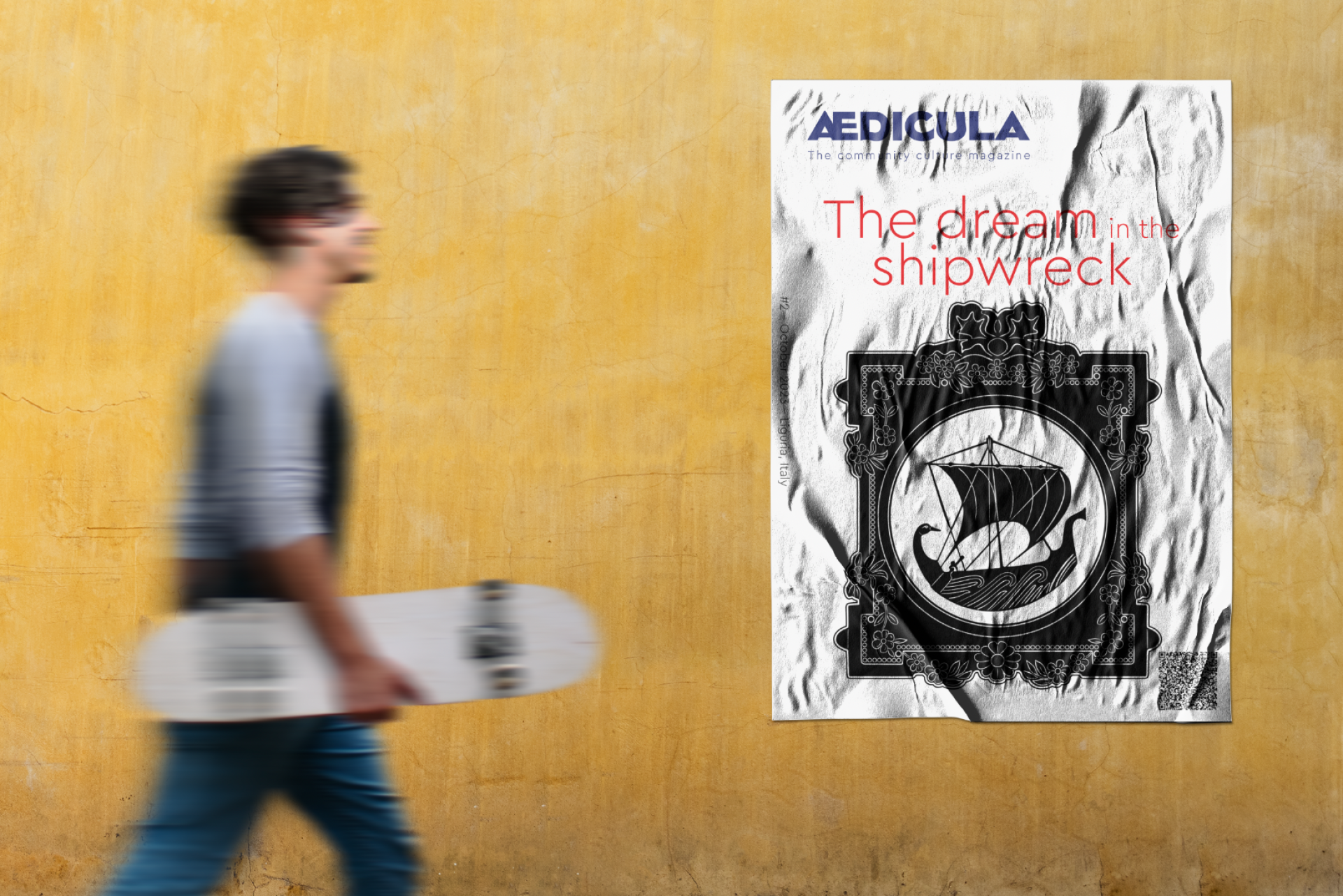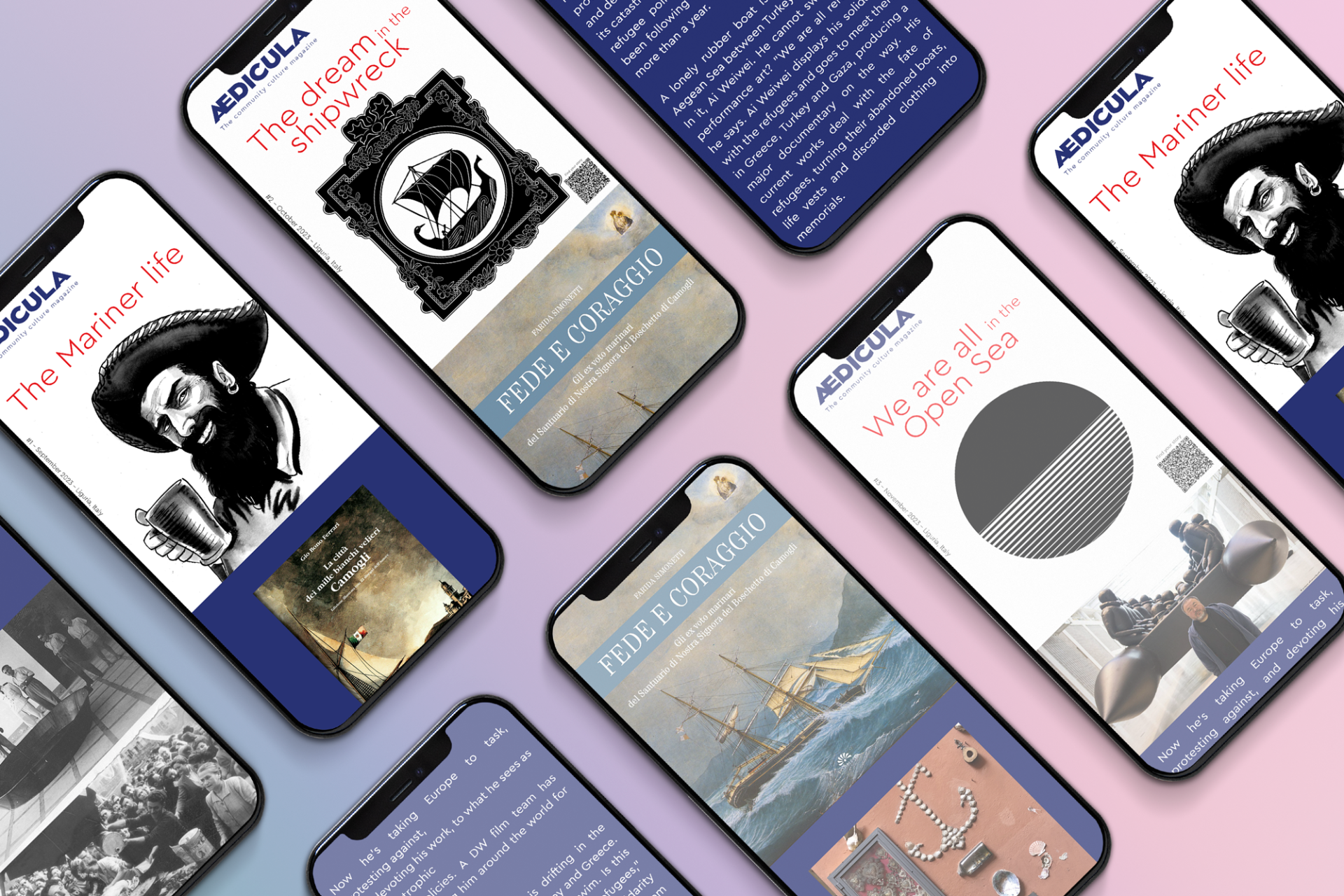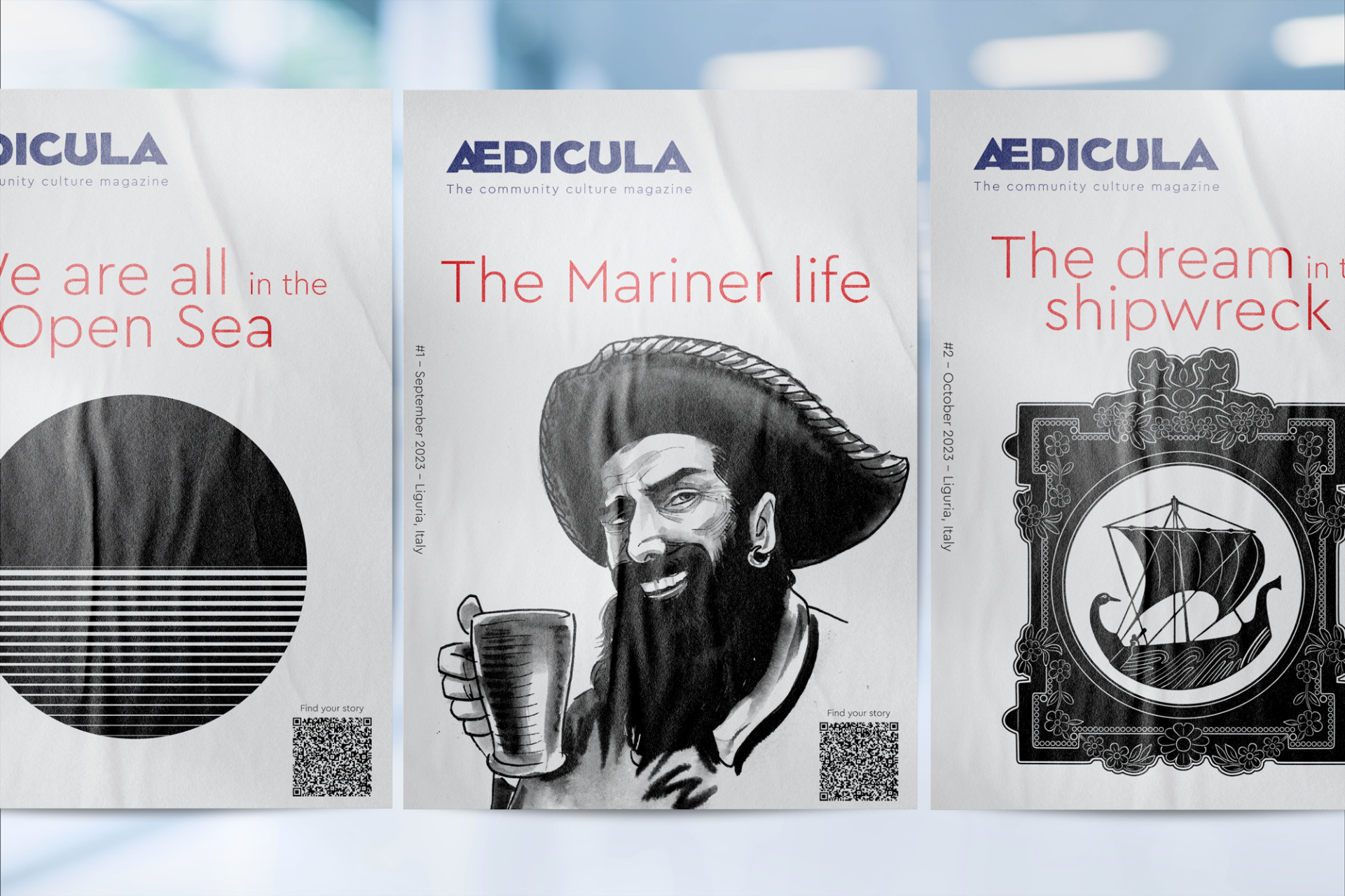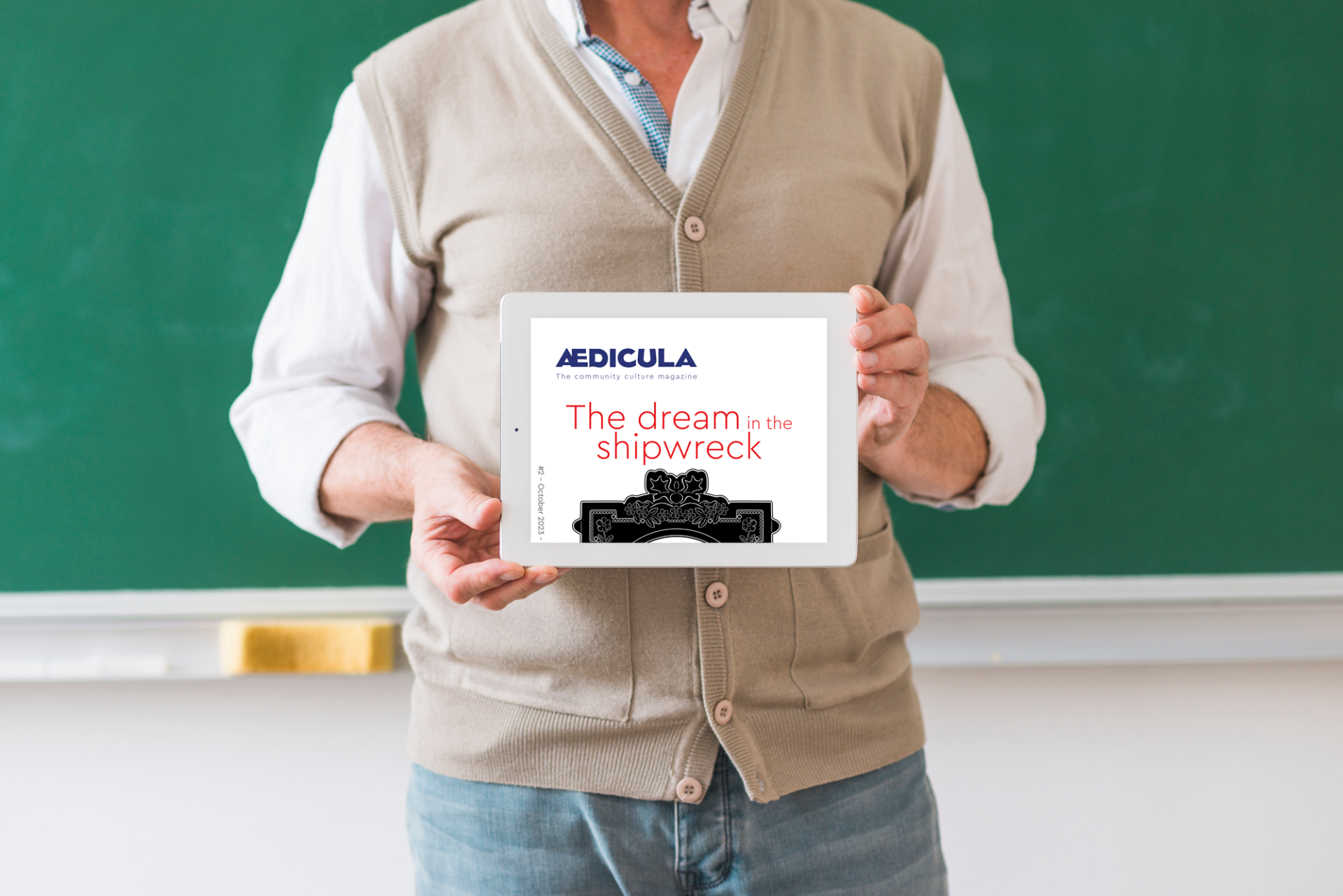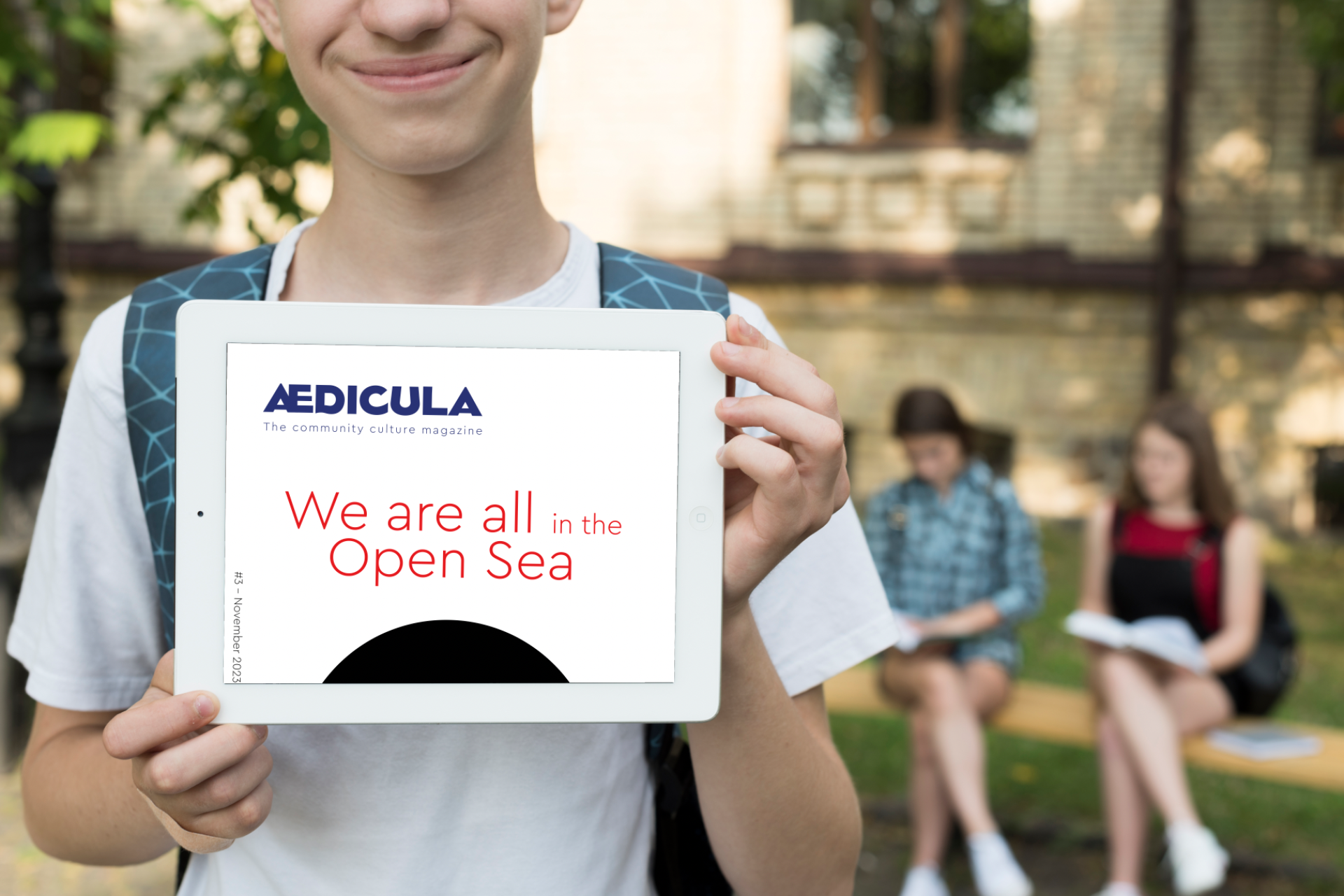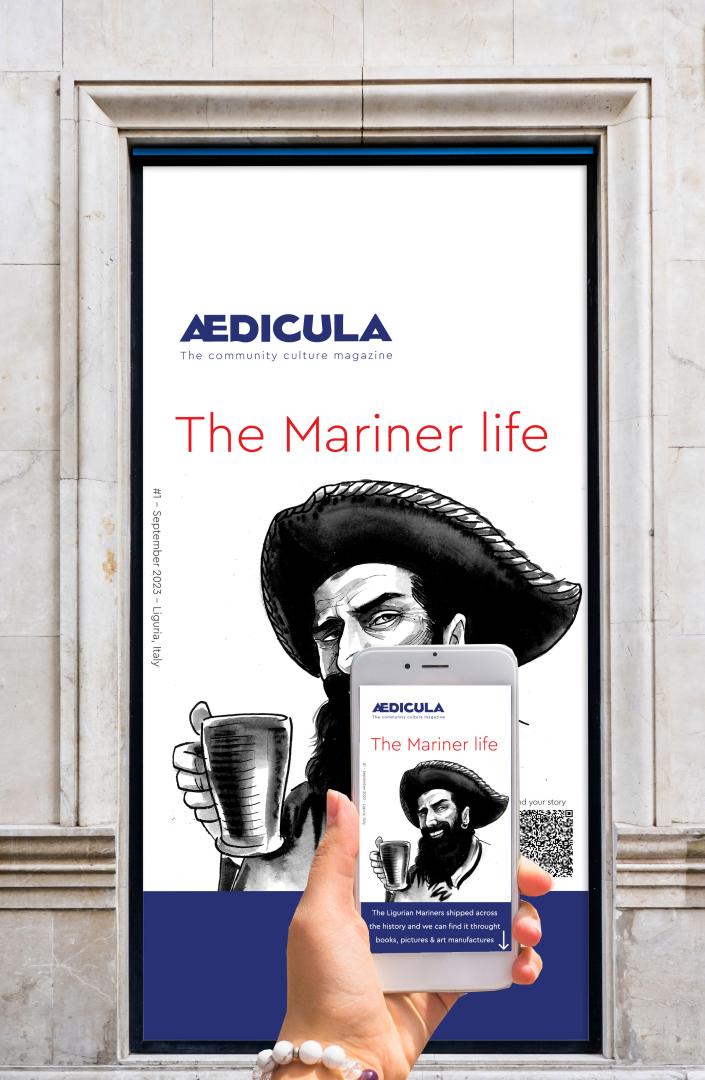AEDICULA
Basic information
Project Title
AEDICULA
Full project title
AEDICULA
Category
Regaining a sense of belonging
Project Description
Aedicula is a digital participatory magazine covering cultural topics of tradition and current affairs.
It features gamification and augmented reality elements that encourage students to visit local GLAM (Galleries, Libraries, Archivers, Museums) cultural venues, stimulating them to rediscover their sense of belonging.
It features gamification and augmented reality elements that encourage students to visit local GLAM (Galleries, Libraries, Archivers, Museums) cultural venues, stimulating them to rediscover their sense of belonging.
Geographical Scope
Local
Project Region
Italy
Urban or rural issues
Mainly urban
Physical or other transformations
It refers to other types of transformations (soft investment)
EU Programme or fund
No
Description of the project
Summary
Aedicula is a participatory digital magazine, accessed by scanning Qr codes placed on striking posters resembling the cover of a magazine. The posters are displayed monthly by the teacher in the classroom. Once the Qr code is scanned, students access the Aedicula platform that contains that month's digital cultural experience.
The experience covers cultural topics related to tradition and current affairs. Each topic is explored and deepened both in hypermedia articles and through edutainment and gamification elements.
Students can manipulate 3D models and move around in 360° virtual environments representing the objects and places of culture and heritage discussed in the articles. These virtual objects and spaces are geo-localised: Aedicula suggests the interactive route and map to visit the objects and spaces in the real GLAM places (Galleries, Libraries, Archives, Museums) in extra-curricular free time.
This experience aims to bring students closer to cultural places and strengthen their sense of belonging.
In addition, Aedicula offers a 'prosumer space' where students can
share their contribution on the theme and creatively express their ideas through various forms (comments, photographs, productions). The best contributions are published in the magazine.
The experience covers cultural topics related to tradition and current affairs. Each topic is explored and deepened both in hypermedia articles and through edutainment and gamification elements.
Students can manipulate 3D models and move around in 360° virtual environments representing the objects and places of culture and heritage discussed in the articles. These virtual objects and spaces are geo-localised: Aedicula suggests the interactive route and map to visit the objects and spaces in the real GLAM places (Galleries, Libraries, Archives, Museums) in extra-curricular free time.
This experience aims to bring students closer to cultural places and strengthen their sense of belonging.
In addition, Aedicula offers a 'prosumer space' where students can
share their contribution on the theme and creatively express their ideas through various forms (comments, photographs, productions). The best contributions are published in the magazine.
Key objectives for sustainability
Using digital devices, the initiative is highly sustainable and easily reproducible.
The magazine covers various topics related to sustainability, with a focus on ocean conservation and underwater life. Other topics covered are the importance of experiencing nature and learning about environmental heritage.
The magazine covers various topics related to sustainability, with a focus on ocean conservation and underwater life. Other topics covered are the importance of experiencing nature and learning about environmental heritage.
Key objectives for aesthetics and quality
Aedicula is an aesthetic experience.
The magazine posters feature an eye-catching design, encouraging students to scan the Qr Code to activate the digital experience. The online experience uses design both to ensure usability through colours, fonts and images, and to show users faithful illustrations and representations of digital cultural heritage (both digitised and born-digital).
The topics addressed in the first edition of Aedicula are cultural and they are:
"A sailor's life"
"We are all at sea"
"The dream during the shipwreck".
"What does modernity compete with?"
"The colours of the Mediterranean"
"The intergenerational local community
"Welcoming".
"Myths and Stories
"Festivals: evocations of tradition?"
"Landscape
"Transatlantic
"Ecology in Contemporary Art".
The magazine posters feature an eye-catching design, encouraging students to scan the Qr Code to activate the digital experience. The online experience uses design both to ensure usability through colours, fonts and images, and to show users faithful illustrations and representations of digital cultural heritage (both digitised and born-digital).
The topics addressed in the first edition of Aedicula are cultural and they are:
"A sailor's life"
"We are all at sea"
"The dream during the shipwreck".
"What does modernity compete with?"
"The colours of the Mediterranean"
"The intergenerational local community
"Welcoming".
"Myths and Stories
"Festivals: evocations of tradition?"
"Landscape
"Transatlantic
"Ecology in Contemporary Art".
Key objectives for inclusion
Aedicula is an inclusive initiative and it is learner-centered.
It is accessible via smartphone or tablet by all students (and anyone with a personal mobile device). The principles of design-for-all ensure:
- Equal use: Aedicula is useful for students with different abilities.
- Flexibility of use: use is free and has no deadlines or time limits.
- Simple and intuitive use: affordances guide and suggest the path in a clear and simple way.
- Perceptible information: contents are in-depth, explained and geo-localised.
- Error tolerance: the path of use is guided, linear and always allows 'going back'.
- Low physical effort: it can be enjoyed remotely. The experience of visiting real GLAM sites is not compulsory.
- Adequate size and space for approach and use: posters are printed and posted inside the school. Everything else is online.
It is accessible via smartphone or tablet by all students (and anyone with a personal mobile device). The principles of design-for-all ensure:
- Equal use: Aedicula is useful for students with different abilities.
- Flexibility of use: use is free and has no deadlines or time limits.
- Simple and intuitive use: affordances guide and suggest the path in a clear and simple way.
- Perceptible information: contents are in-depth, explained and geo-localised.
- Error tolerance: the path of use is guided, linear and always allows 'going back'.
- Low physical effort: it can be enjoyed remotely. The experience of visiting real GLAM sites is not compulsory.
- Adequate size and space for approach and use: posters are printed and posted inside the school. Everything else is online.
Results in relation to category
Progress in implementing the initiative: increased visits to GLAM institutions by the public (citizens); reaching a younger audience (students).
Progress in learning: effectiveness in learning given by the constructivist approach and the type of experience proposed. Through the practice of "learning by doing," students demonstrate consolidation of their knowledge of cultural heritage and strengthen their cultural identity.
For the following year, Fabriek studio proposes a second edition of Aedicula in a collaboration with other museums in the area that deal with other cultural issues and involves other high schools in the area.
Progress in learning: effectiveness in learning given by the constructivist approach and the type of experience proposed. Through the practice of "learning by doing," students demonstrate consolidation of their knowledge of cultural heritage and strengthen their cultural identity.
For the following year, Fabriek studio proposes a second edition of Aedicula in a collaboration with other museums in the area that deal with other cultural issues and involves other high schools in the area.
How Citizens benefit
Starting with the involvement of students, the initiative benefits all citizens.
In fact, the students show Aedicula to their parents and relatives and ask them to take them to the real GLAM sites during the weekend or in their extracurricular free time.
In this way, a phenomenon of rapprochement to cultural venues is triggered, not only by the students, but by the entire community.
In fact, the students show Aedicula to their parents and relatives and ask them to take them to the real GLAM sites during the weekend or in their extracurricular free time.
In this way, a phenomenon of rapprochement to cultural venues is triggered, not only by the students, but by the entire community.
Physical or other transformations
It refers to other types of transformations (soft investment)
Innovative character
Aedicula is an innovative initiative.
It is based on gamification and augmented reality elements, and it enables the exercise of European key competencies, with a focus on digital competence.
The element of innovation also lies in the structure of the experience: instead of bringing cultural content out of the GLAM places, digital is applied to draw students and citizens into the places themselves.
It is based on gamification and augmented reality elements, and it enables the exercise of European key competencies, with a focus on digital competence.
The element of innovation also lies in the structure of the experience: instead of bringing cultural content out of the GLAM places, digital is applied to draw students and citizens into the places themselves.
Disciplines/knowledge reflected
The initiative involves different sectors of the social context Work, Education and Public.
- Work: studio Fabriek conceived, designed and developed the project. Experts in the field of art direction and Digital Humanities were involved. Design and web design work enabled the creation of the posters and online experience (layout and web structure).
- Public: the GLAM places (Galleries, Libraries, Archives, Museums; public social context), which are the heart of the cultural experience, provided the cultural knowledge useful to create the content, either the articles or the objects or reconstructions of the places.
- Education: students are the active users of the experience, and are also involved as prosumers. They exercise European Key Competencies No. 4 (digital competence) and No. 8 (cultural awareness and expression competence) and produce digital cultural content under the supervision of teachers.
- Work: studio Fabriek conceived, designed and developed the project. Experts in the field of art direction and Digital Humanities were involved. Design and web design work enabled the creation of the posters and online experience (layout and web structure).
- Public: the GLAM places (Galleries, Libraries, Archives, Museums; public social context), which are the heart of the cultural experience, provided the cultural knowledge useful to create the content, either the articles or the objects or reconstructions of the places.
- Education: students are the active users of the experience, and are also involved as prosumers. They exercise European Key Competencies No. 4 (digital competence) and No. 8 (cultural awareness and expression competence) and produce digital cultural content under the supervision of teachers.
Methodology used
The methodology and approach used are those of constructivist education: through digital, an active fruition of the experience is proposed by the user who is involved in both online activities and in the activities of visiting the GLAM sites.
This develops cultural awareness.
In addition, the production part allows students to use their prior knowledge to practice cultural expression. This again is done in an active way and with a constructivist approach.
This develops cultural awareness.
In addition, the production part allows students to use their prior knowledge to practice cultural expression. This again is done in an active way and with a constructivist approach.
How stakeholders are engaged
The first stakeholder involved in the initiative is the school. In particular, the project involved the Istituto Tecnico Nautico San Giorgio in Camogli and Genoa.
In fact, the first edition of Aedicula deals with topics related to the sea and therefore brings back objects from GLAM locations such as the Genoa Principe Library and the Galata Museo del Mare, and the 'Niccolò Cuneo' library and the Museo Marinaro in Camogli.
In fact, the first edition of Aedicula deals with topics related to the sea and therefore brings back objects from GLAM locations such as the Genoa Principe Library and the Galata Museo del Mare, and the 'Niccolò Cuneo' library and the Museo Marinaro in Camogli.
Global challenges
The global challenge relates to the goals of the UN 2030 Agenda, specifically that of Culture 2030: The Role of Culture for Sustainable Development.
The initiative considers some of the SDG priorities and macro goals that have been the subject of cross-disciplinary learning and study across cultural goods and services of Museums, Archives and Libraries and their stakeholders for the past few years in order to find responses that flesh out joint development actions, research projects, improvement, modernization, security and safeguarding, that address public cultural heritage in the rapidly changing global society that requires more updated skills and different approaches from the current ones.
The initiative considers some of the SDG priorities and macro goals that have been the subject of cross-disciplinary learning and study across cultural goods and services of Museums, Archives and Libraries and their stakeholders for the past few years in order to find responses that flesh out joint development actions, research projects, improvement, modernization, security and safeguarding, that address public cultural heritage in the rapidly changing global society that requires more updated skills and different approaches from the current ones.
Learning transferred to other parties
The methodology, technology, processes and learning modes are entirely replicable.
It would only be a matter of adapting the content to the subjects being taught within the schools and connecting it with the GLAM sites in the area where the schools are located and which preserve the cultural content related to the topics covered.
It would only be a matter of adapting the content to the subjects being taught within the schools and connecting it with the GLAM sites in the area where the schools are located and which preserve the cultural content related to the topics covered.
Keywords
cultural awareness and expression
digital innovation
citizenship
learner centered design
sense of belonging

